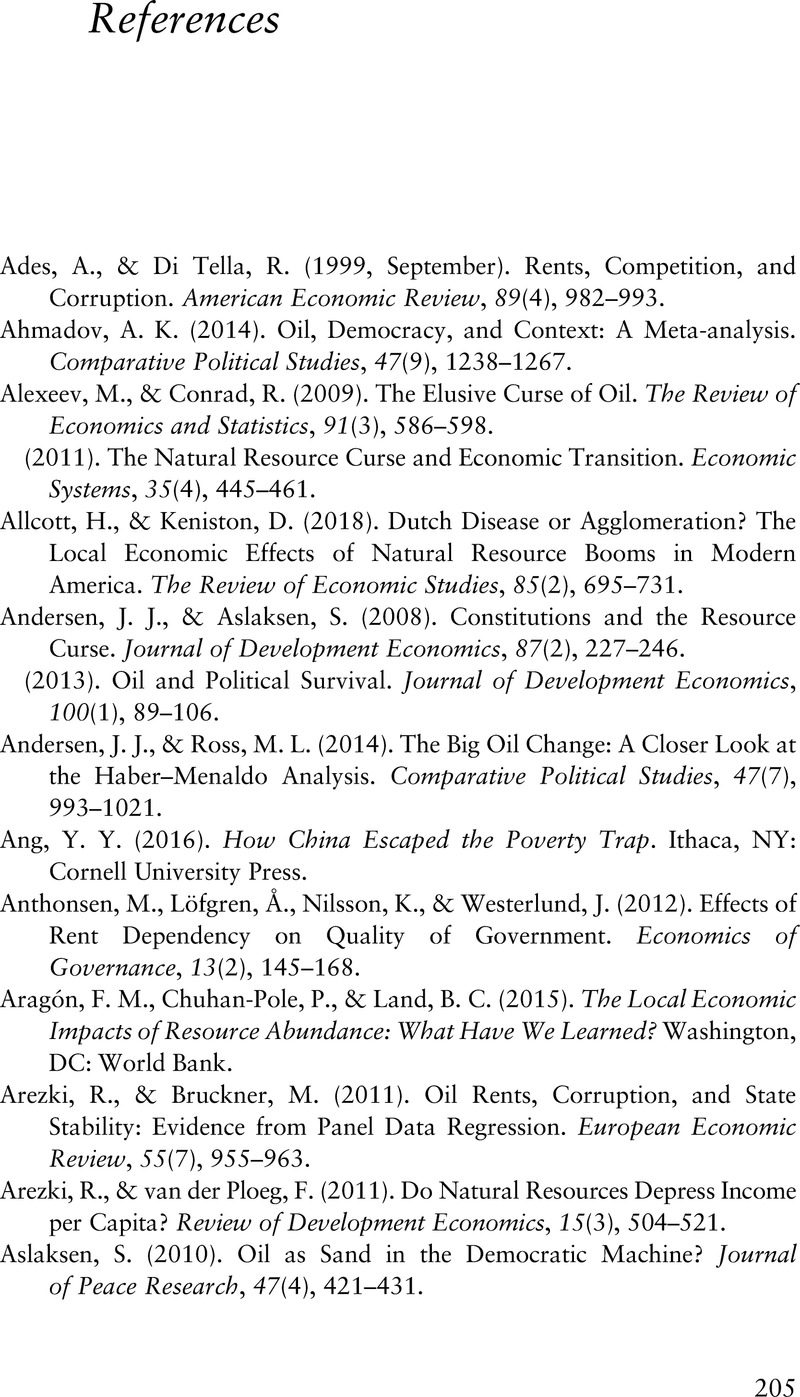Book contents
- China’s Contained Resource Curse
- China’s Contained Resource Curse
- Copyright page
- Dedication
- Contents
- Figures
- Tables
- Acknowledgments
- Abbreviations
- 1 Minerals and the State–Capital–Labor Triad
- 2 Minerals, Capital, and Local Economic Development
- 3 Resource Extraction and Victimization of Labor
- 4 Resources and Local State Capture
- 5 Resources and Local Public Goods Provision
- 6 Coping with the Resource Curse
- References
- Index
- References
References
Published online by Cambridge University Press: 24 March 2022
- China’s Contained Resource Curse
- China’s Contained Resource Curse
- Copyright page
- Dedication
- Contents
- Figures
- Tables
- Acknowledgments
- Abbreviations
- 1 Minerals and the State–Capital–Labor Triad
- 2 Minerals, Capital, and Local Economic Development
- 3 Resource Extraction and Victimization of Labor
- 4 Resources and Local State Capture
- 5 Resources and Local Public Goods Provision
- 6 Coping with the Resource Curse
- References
- Index
- References
Summary

- Type
- Chapter
- Information
- China's Contained Resource CurseHow Minerals Shape State Capital Labor Relations, pp. 205 - 218Publisher: Cambridge University PressPrint publication year: 2022

